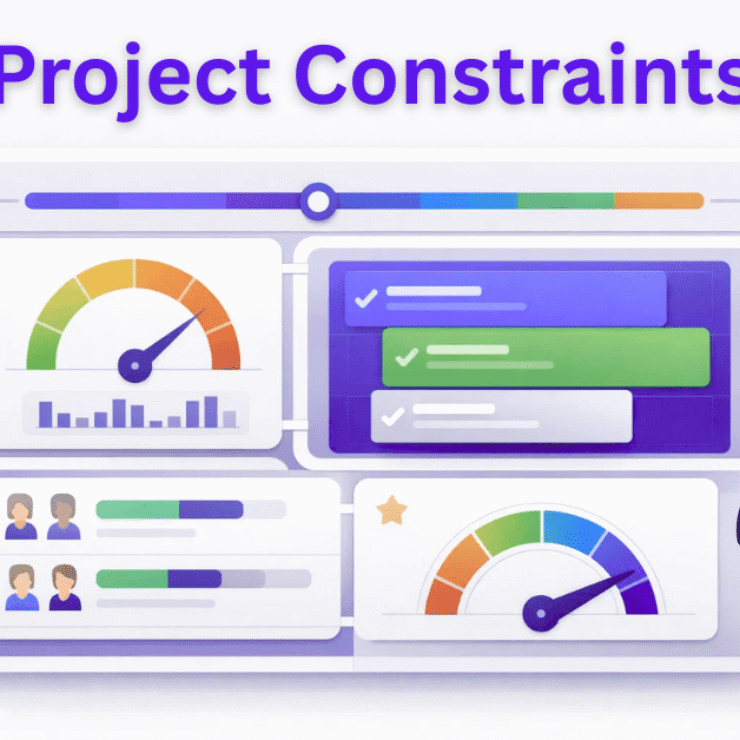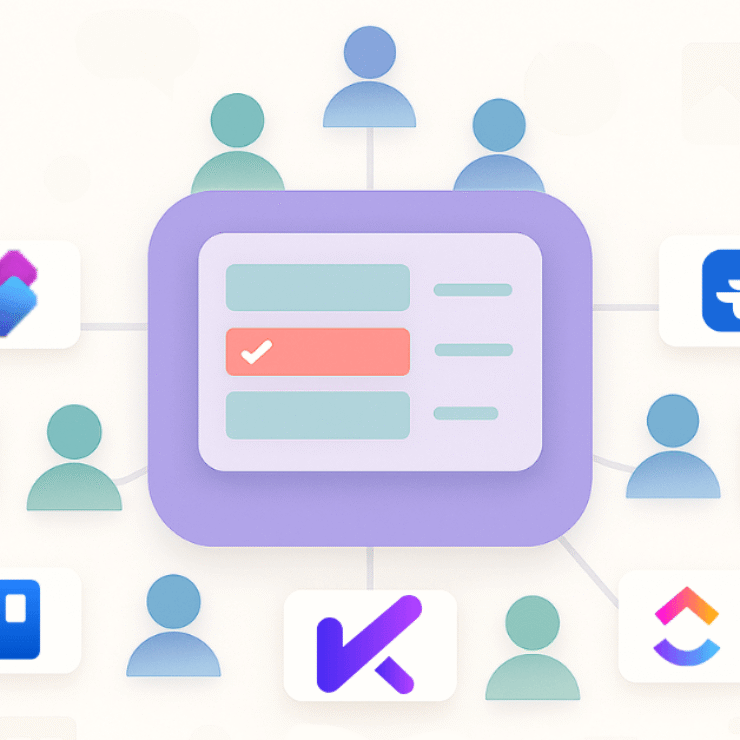Introduction
Project management is simply the art and science of turning an idea into a finished outcome — on time, on budget, and without chaos.
In 2025, it’s no longer just about schedules and Gantt charts. It’s about clarity, adaptability, and using the right mix of people, processes, and tools to deliver value faster.
(According to PMI’s 2024 Pulse of the Profession report, 89% of high-performing organizations now view project management as a strategic business enabler — not just an execution function.)
Key Takeaways at a Glance
- Project Management Definition: According to the Project Management Institute (PMI), project management is “the application of knowledge, skills, tools, and techniques to project activities to meet the project requirements.” In simpler words — it’s how you make sure what you promised is exactly what you deliver, no matter how unpredictable things get.
- The Core Purpose: To bring order to chaos, ensuring projects are completed on time, within budget, and to the required quality standard.
- The 5 Stages: Nearly every project follows five phases: Initiation, Planning, Execution, Monitoring, and Closure.
- The Modern PM: The role is evolving from a task-master to a strategic leader, focusing on communication, risk mitigation, and team empowerment.
- The Tech Imperative: Modern software is essential for managing the complexity of today’s projects, especially with remote and hybrid teams.
What is Project Management in Simple Words?

So, what is project management in simple words? It is the art and science of turning an idea into reality. It’s the structured process of taking a project from start to finish, navigating all the complexities along the way to deliver a successful outcome.
To truly understand this, we first need to define a “project.” A project isn’t just a collection of tasks; it’s a temporary endeavor with a defined beginning and end, designed to produce a unique product, service, or result. This makes it different from “operations,” which are the ongoing, repetitive activities of a business.
At the heart of all project management lies the challenge of balancing three core constraints, often called the “Iron Triangle” or “Triple Constraint”:
- Scope: What exactly are we trying to achieve? What are the specific goals and deliverables?
- Time: How long do we have to complete the work? What is the deadline?
- Cost (or Resources): What is our budget? How many people and what materials do we have?
The project manager’s job is to navigate these competing constraints. If a client wants to increase the scope, it will almost certainly impact the time and/or cost, and it’s the manager’s job to manage that trade-off.
In 2025, however, successful leaders add a fourth, crucial element to the center of this triangle: Quality or Value. It’s no longer enough to be on time and on budget; the project must deliver real value and meet the expectations of its stakeholders.
The Main Purpose of Project Management
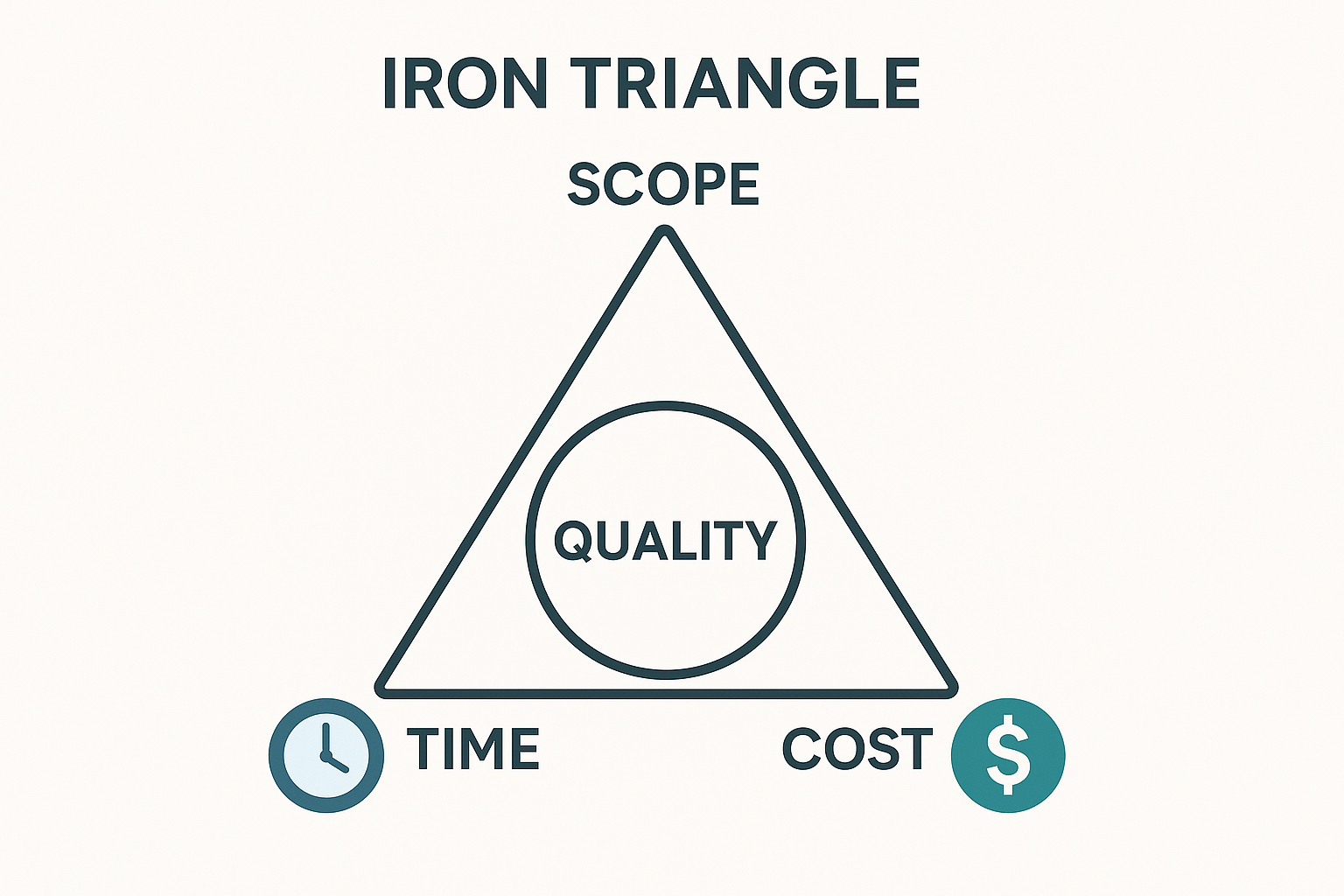
At its core, the main purpose of project management is to bring order to chaos. It provides a predictable framework to guide a team’s efforts, turning ambitious, often messy ideas into tangible results. Without it, teams risk working in silos, missing deadlines, and failing to achieve their goals.
In today’s fast-paced business environment, with remote teams and increasing complexity, its importance has only grown. The key benefits of implementing strong project management practices include:
- Strategic Alignment: It ensures that the projects being worked on are the ones that directly contribute to the company’s larger strategic goals.
- Clear Direction & Focus: It provides a single, unified roadmap that keeps everyone on the team—from developers to marketers—moving in the same direction.
- Proactive Risk Management: It creates a process for identifying, assessing, and mitigating potential problems before they have a chance to derail the entire project.
- Optimized Resource Use: It ensures you are getting the most out of your most valuable assets: your budget, your materials, and most importantly, your team’s limited and valuable time.
- Realistic Planning: It replaces optimistic guesswork with data-driven estimates for timelines and budgets, leading to more trust with clients and stakeholders.
The 5 Stages of the Project Management Lifecycle
While every project is unique in its goals, the journey they take from concept to completion is remarkably consistent. This journey is broken down into the 5 stages of project management. Understanding these phases is fundamental to the entire discipline, as it provides a predictable structure for any endeavor.
To make this tangible, let’s follow a simple, relatable project through these five stages: Planning a Corporate Charity Gala.
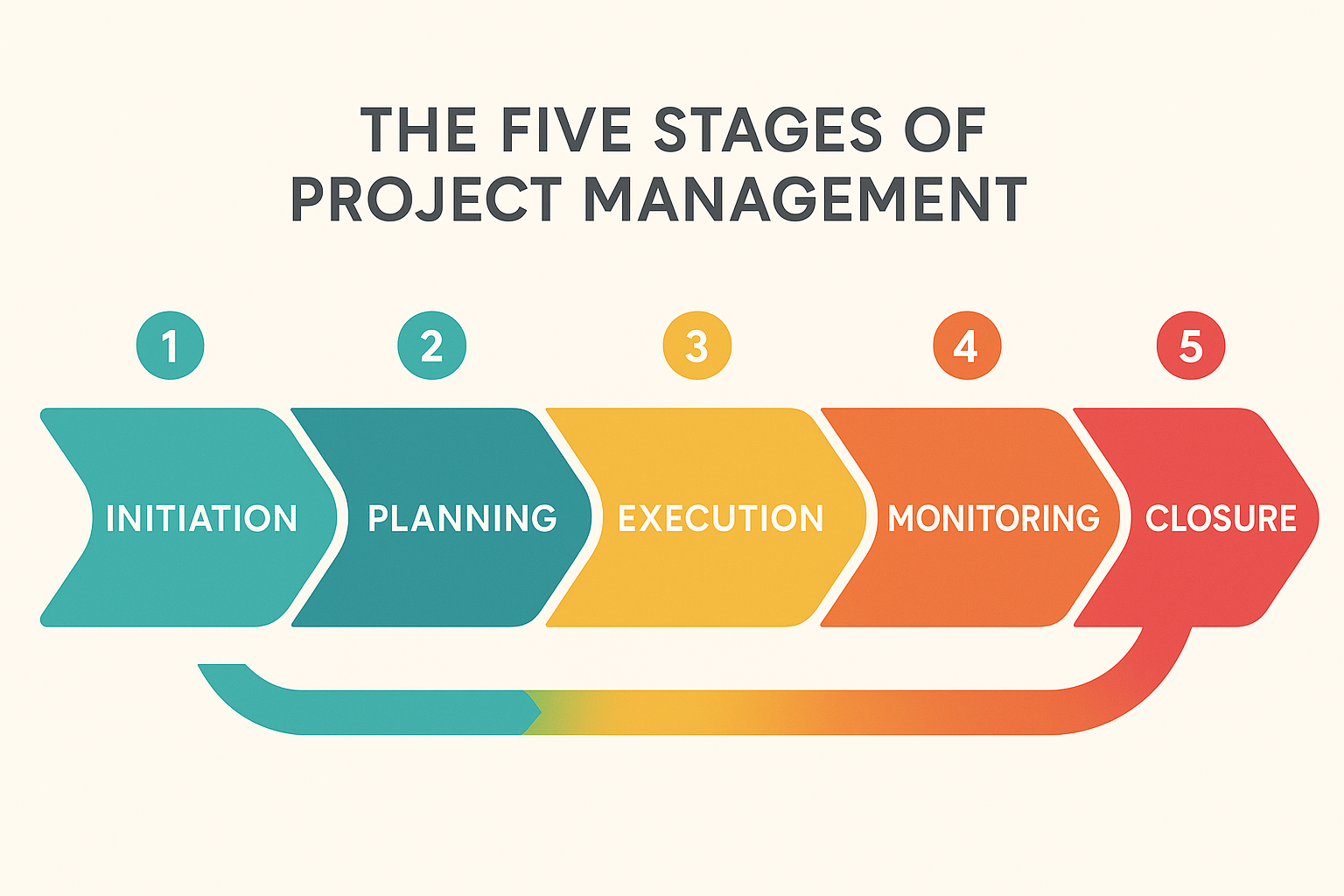
Stage 1: Initiation (Defining the ‘What’ and ‘Why’)

This is the birth of the project. The goal here is not to plan every detail, but to define the project at a high level and determine if it’s feasible and should be undertaken.
- Key Activities: Creating a project charter or a project brief, identifying key stakeholders, defining the high-level business case, and securing initial approval to proceed.
- Our Gala Example: In this stage, the leadership team decides the event’s core purpose (e.g., “to raise $50,000 for our designated charity”). They approve a high-level budget, appoint a project manager, and create a project charter that officially greenlights the initiative.
Stage 2: Planning (Building the Roadmap)
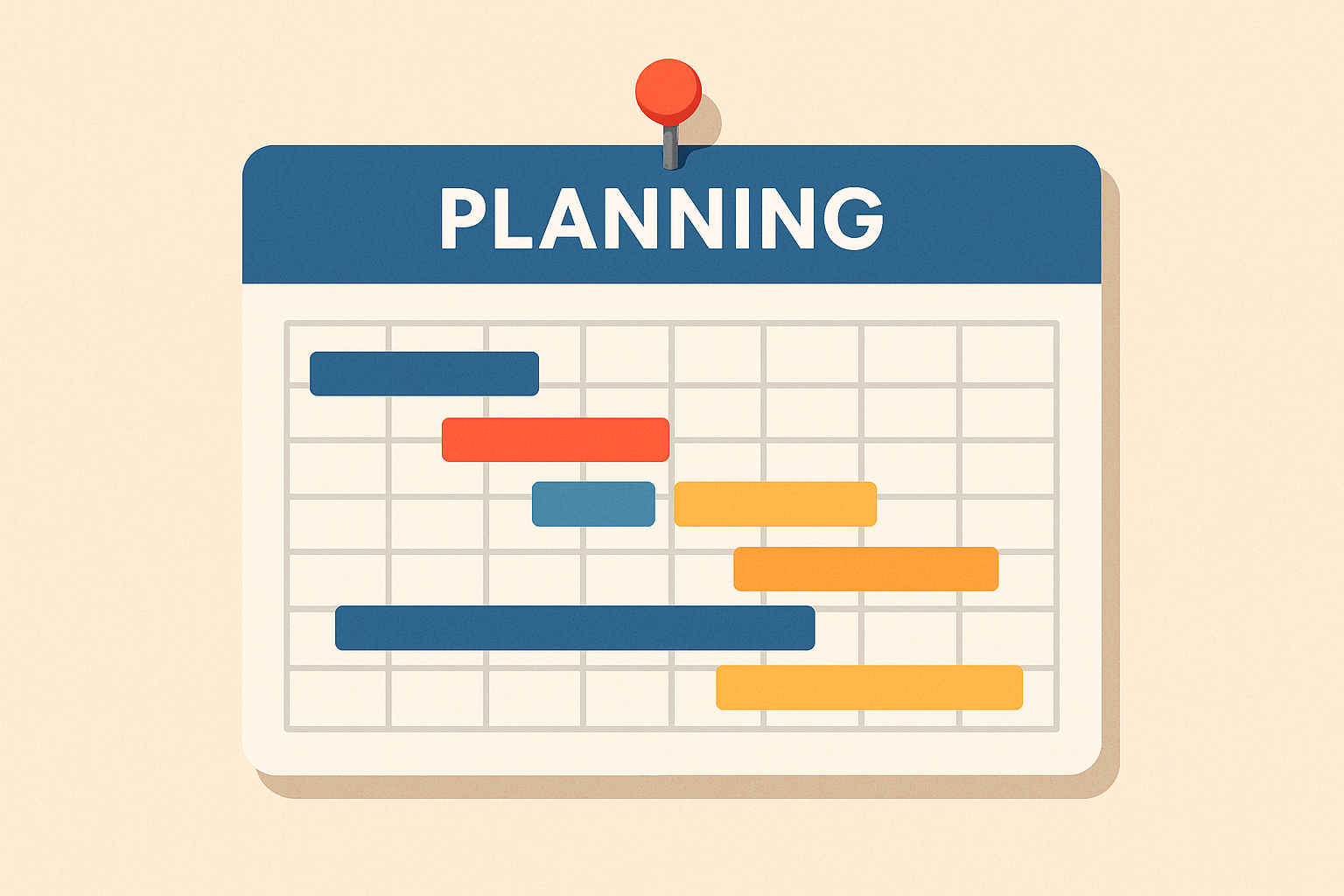
This is often the most intensive phase. Here, the project manager and their team develop the comprehensive, detailed plan that will guide every action through to completion. A good plan is the best defense against future chaos.
- Key Activities: Defining the detailed scope, creating a Work Breakdown Structure (WBS) to list all tasks, developing a schedule (often with a Gantt chart), setting a detailed budget, identifying potential risks, and assigning roles and responsibilities.
- Our Gala Example: The team books the venue, selects a caterer, creates a detailed task list for everything from marketing to logistics, assigns roles to the event committee, and sets a firm timeline for ticket sales, sponsorships, and promotion.
Stage 3: Execution (Doing the Work)
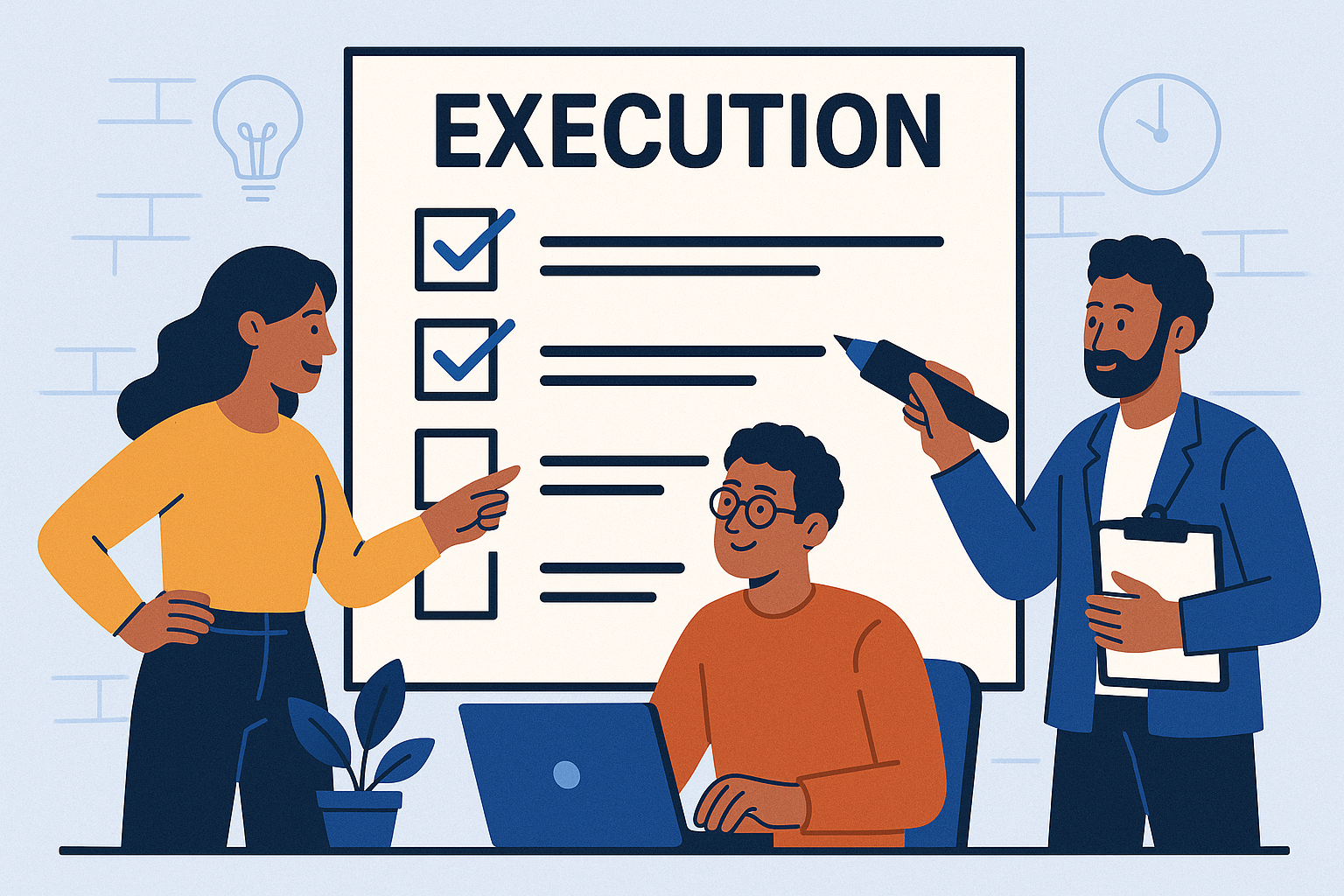
This is where the plan is put into motion. The team gets to work completing their assigned tasks and creating the project’s deliverables.
- Key Activities: Team members complete their assigned work, the project manager coordinates resources, regular status meetings are held to ensure alignment, and stakeholders are kept informed of progress.
- Our Gala Example: The marketing team sends out invitations, the logistics team coordinates with the venue, the sponsorship team secures corporate donors, and tickets begin to sell. The plan is alive and moving.
Stage 4: Monitoring & Controlling (Keeping the Project on Track)
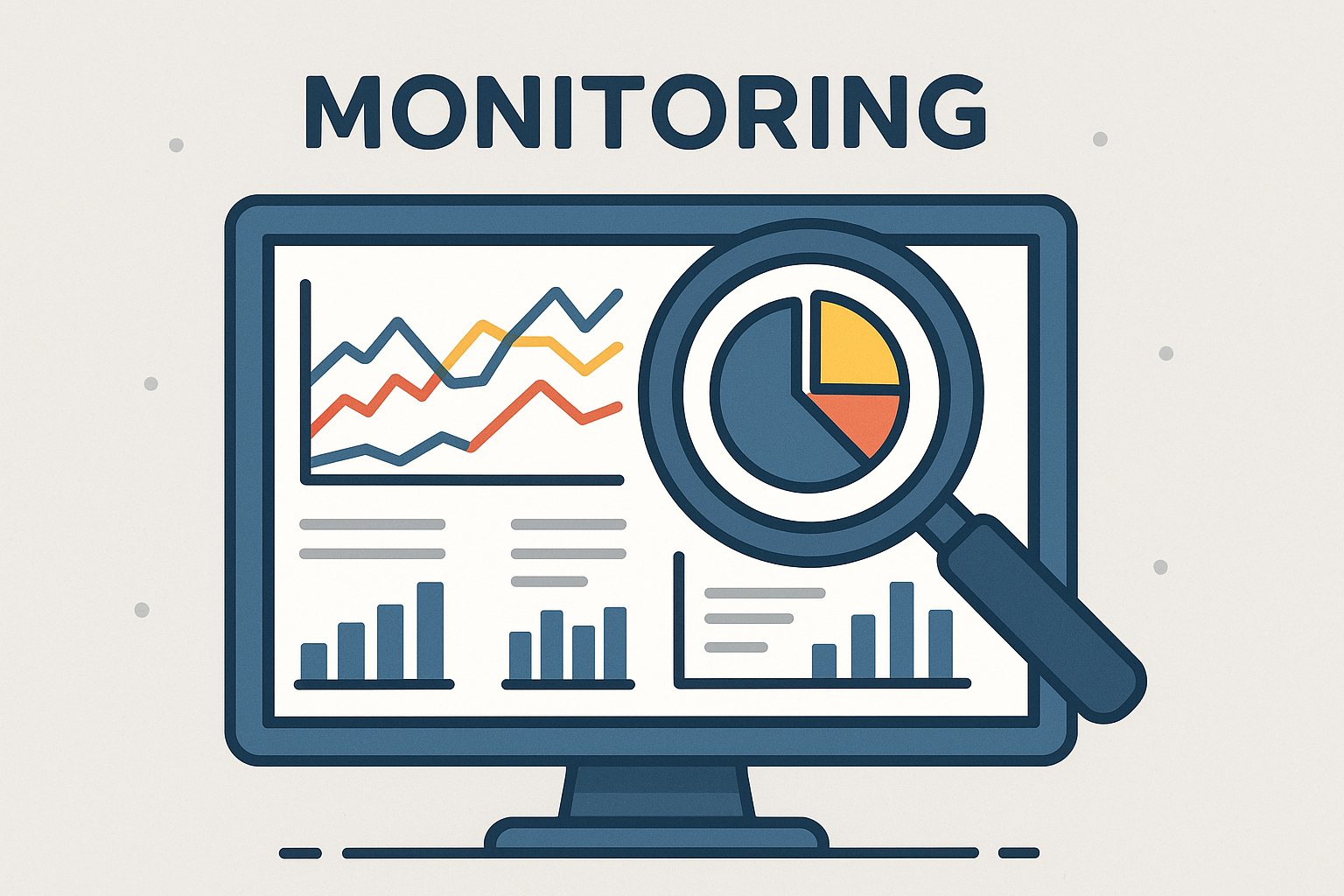
This stage doesn’t happen after execution; it happens concurrently with it. As the team works, the project manager continuously measures progress against the original plan and makes adjustments as needed.
- Key Activities: Tracking Key Performance Indicators (KPIs) like budget variance and schedule progress, managing any changes to the scope (scope creep), resolving issues, and reporting on performance.
- Our Gala Example: The project manager is tracking ticket sales weekly. They notice sales are lagging behind the forecast. After assessing the situation, they approve a small, controlled budget increase to run a targeted social media ad campaign to boost sales. This is a controlled course correction to keep the project on track towards its fundraising goal.
Stage 5: Closure (Finishing Strong)

The project is complete, but the work isn’t over. The closure phase is about formally finalizing all aspects of the project and extracting valuable lessons for the future.
- Key Activities: Delivering the final product or result, formally closing out contracts with vendors, archiving all project documentation, releasing team members back to other work, and, most importantly, conducting a post-mortem or lessons-learned review.
- Our Gala Example: The gala is a resounding success! The team processes the final payments to vendors, sends thank-you notes to all donors and attendees, and holds a review meeting to discuss what went well and what could be improved for next year’s event. This knowledge is captured and saved.
The 5 Main Roles of a Project Manager
A project doesn’t manage itself. It needs a dedicated leader—the project manager. This role is far more than just tracking tasks on a checklist; it’s a dynamic and challenging mix of leadership, communication, and strategic thinking. So, what are the main 5 roles of project management leadership that a single person must embody?
- The Planner: The project manager is the architect of the project. They work with the team and stakeholders to map out the entire journey, defining the scope, creating the schedule, and building the detailed roadmap that the team will follow.
- The Communicator: This is arguably the most critical role. The project manager serves as the central communication hub, ensuring information flows seamlessly between the project team, stakeholders, and leadership. They make sure everyone is aligned and has the information they need to succeed.
- The Leader & Motivator: A great PM doesn’t just manage tasks; they lead people. They are responsible for building team morale, celebrating wins, removing roadblocks that frustrate their team, and creating a positive, collaborative environment where people feel empowered to do their best work.
- The Risk Manager: A project manager is always looking ahead. They are constantly scanning the horizon for potential problems—technical glitches, resource shortages, stakeholder disagreements—and developing contingency plans before those problems become full-blown crises.
- The Problem-Solver: When things inevitably go off-plan, the project manager is the one who remains calm, gathers the right people, assesses the situation objectively, and guides the team toward a viable solution.
- The 2025 Evolution: In today’s workplace, the “Leader & Motivator” role is becoming paramount. With the challenges of remote teams and the increasing risk of burnout, a modern PM’s success is often measured by their ability to foster psychological safety, empathy, and sustainable productivity.
It is widely cited that successful project managers spend up to 90% of their working hours on communication-related activities, from team meetings to stakeholder reporting.
Common Project Management Methodologies
There isn’t one single “right” way to run a project. Different types of projects with different levels of uncertainty call for different approaches, which are known as methodologies. Choosing the right one is a key decision made during the planning phase. Here are some of the most common ones explained simply.
Waterfall- Analogy: Think of building a house. You must finish the foundation completely before you can build the walls, and you must finish the walls before you can put on the roof. It’s a linear, sequential process where each phase must be 100% complete before moving to the next.
- Best for: Projects with very stable, well-understood requirements where changes are not expected, such as in construction, manufacturing, or some government projects.
- Analogy: Think of writing a novel. Instead of planning the entire book from start to finish and then writing it all at once, you work in chapters (called “sprints” in Agile). After each chapter, you might share it to get feedback and make adjustments before starting the next one. It’s iterative and flexible.
- Best for: Projects where the requirements are expected to change or evolve, or where you want to deliver value to the customer quickly and get feedback. This is very common in software development, marketing, and product design.
- Clarification: Scrum is not a different methodology from Agile; it is the most popular framework used to implement the Agile philosophy.
- Key Concepts: It’s characterized by specific roles (Product Owner, Scrum Master, Development Team) and ceremonies (Sprints, Daily Stand-ups, Sprint Reviews) that create a structured rhythm for iterative work.
- Analogy: Think of a sushi conveyor belt. The goal is to keep a smooth, continuous flow of work moving from left to right. Tasks are visualized on a board (typically with columns like “To Do,” “In Progress,” and “Done”), and the team pulls work onto the belt only as they have the capacity.
- Best for: Teams that need to manage a continuous flow of tasks rather than a single, large project, such as IT support, content creation teams, or maintenance crews.
The Modern Toolkit: Project Management in the Digital Age
In the past, project management was done with paper charts, massive whiteboards, and endless meetings. Today, trying to manage the speed and complexity of work—especially with globally distributed, remote teams—is nearly impossible without dedicated software.
A study by PwC found that 77% of high-performing projects use project management software to plan, execute, and control all aspects of their projects.
The best project management software acts as the digital command center for all the principles and processes we’ve discussed. It’s the workspace where your plan comes to life. When evaluating tools, you should look for a platform that provides:
- A central place for project planning and detailed task management.
- Visual tools like Gantt charts and Kanban boards to manage schedules and workflows in a way that suits your chosen methodology.
- Features for seamless team collaboration and communication, reducing reliance on scattered email and chat threads.
- Powerful dashboards and reporting capabilities to monitor progress in real-time without manual effort.
Conclusion: Your Journey Starts Here
FAQs
What is project management in simple words?
Project management is the structured process of turning an idea into reality by planning, executing, and completing tasks to meet goals within time, cost, and quality constraints.
What are the 5 stages of project management?
What are the main 5 roles of a project manager?
A project manager acts as a planner, communicator, leader, risk manager, and problem-solver, guiding the team from start to finish.
What is the main purpose of project management?
The main purpose is to bring order and structure to complex tasks, ensuring goals are met efficiently, on time, and within budget.


